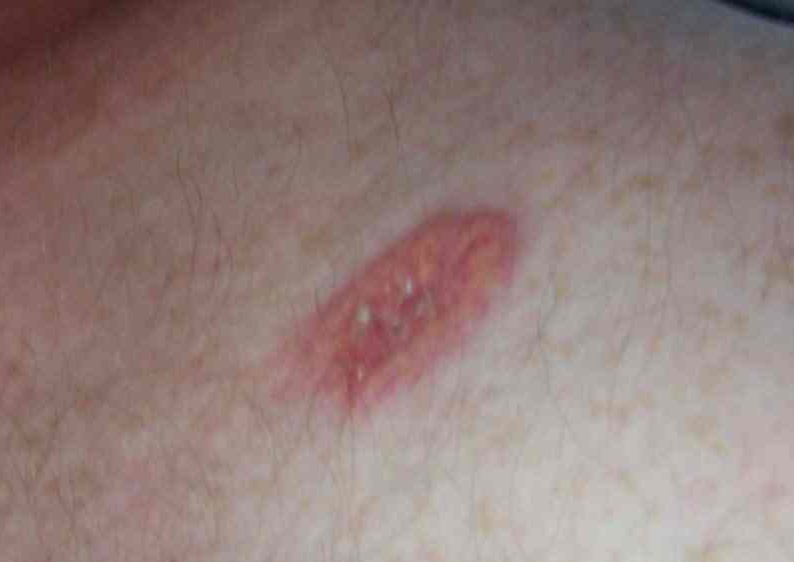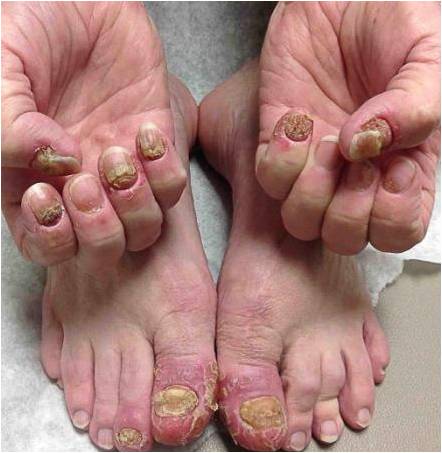Presenter: Victoria Comeau, DO, Alexandria Glass, DO, David Lemchak, DO, Haley Lewis, DO, Caitlin Porubsky, DO
Dermatology Program: PCOM/North Fulton Hospital
Program Director: Dr. Marcus Goodman
Submitted on: August 5, 2018
CHIEF COMPLAINT: New growth under the right arm
CLINICAL HISTORY: A 36-year-old Caucasian male presented to the clinic with complaints of a new growth under the right arm that had been present for approximately 2 months and had progressively increased in size. He noted tenderness surrounding the lesion but aside from this, the lesion was asymptomatic. Review of systems was negative for any associated fevers, weight loss, night sweats, chest pain, shortness of breath, gastrointestinal discomfort, rash or edema. The patient had not received any previous treatment, as this was his initial presentation. He was, however, prescribed doxycycline due to concern for possible localized cellulitis. His past medical history was significant for hypertension, which was well controlled with Losartan. He denied any pertinent family history.
PHYSICAL EXAM:
The patient presented with a single ulcerated, erythematous nodule located in the posterolateral right axilla with faint erythema surrounding the solitary lesion.
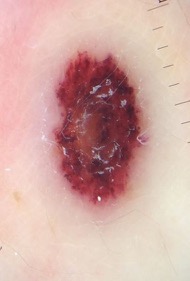
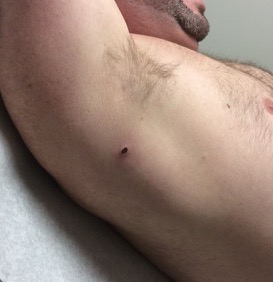
LABORATORY TESTS: N/A
DERMATOHISTOPATHOLOGY:
The patient’s lesion was biopsied using a shave method and histology revealed an atypical T-cell dermal lymphoid infiltrate found positive for CD30. There was noted to be extensive epidermal and dermal necrosis, hemorrhage, and fibrinopurulent exudate. Immunostains were performed and showed lymphoid cells positive for both CD3 and CD4 but negative for CD8. Additionally, CD20 highlighted some extremely rare B cells while CD30 showed focal and variable positivity. Stains for HSV1, HSV2 and Varicella were all negative.
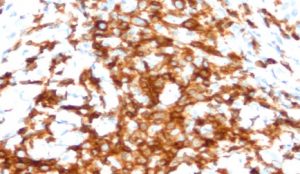

DIFFERENTIAL DIAGNOSIS:
1. C variant of lymphomatoid papulosis (Lyp)
2. Primary cutaneous CD30 positive anaplastic large cell lymphoma (PCALCL)
3. Reactive lymphoproliferative process
4. Metastatic visceral/nodal T-cell lymphoma
5. CD30 positive transformed mycosis fungoides


